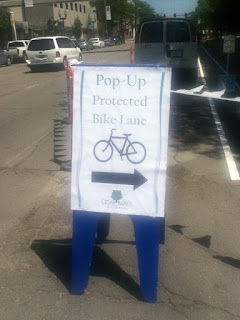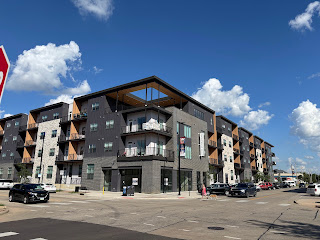In Book I Taleb argues that antifragility not only exists, but that to develop it is in most contexts a desirable goal, because prospering is better than mere survival. He further argues that because specific crisis events are random and therefore unpredictable (see pp. 66-70), the best way to prepare for chaos--to develop antifragility--is to be subject to the right amount of stressors over time. Stress provokes progress by requiring innovative responses:
I hold--it is beyond speculation, rather a conviction--that innovation and sophistication spark from initial situations of necessity, in ways that go far beyond the satisfaction of such necessity... Naturally, there are classical thoughts on the subject, with a Latin saying that sophistication is born out of hunger (artificia docuit fames). (pp. 41-42)Too little stress makes one fragile, albeit too much stress without time to recover can be fatal. In other words, whoever first said "What doesn't kill me makes me stronger"--Taleb tells me it was Friedrich Nietzsche (1844-1900)--was onto something.
Finally, in chapter 4 ("What Kills Me Makes Others Stronger"), Taleb argues that groups and systems are strengthened--made more anti-fragile--when individuals fail. "[E]rrors and their consequences are information," says Taleb. "For complex systems" like societies and economies "are, well, all about information" (p. 57). Those individual failures can serve as negative examples for the rest of the group, and anyhow the survivors are likely to be stronger than those who perish:
Restaurants are fragile; they compete with each other, but the collective of local restaurants is antifragile for that very reason. Had restaurants been individually robust, hence immortal, the overall business would be either stagnant or weak, and would deliver nothing better than cafeteria food--and I mean Soviet-style cafeteria food, Further, it would be marred with systemic shortages, with, once in a while, a complete crisis and government bailout. All that quality, stability, and reliability are owed to the fragility of the restaurant itself. (pp. 65-66)
Applying this powerful concept to governments, Strong Towns asks: We often assume that regional planning is good; people working together. I tend to see regional planning as an attempt to simplify (dumb down) complex systems into merely complicated system. Would we all benefit -- as in airline crashes or restaurant startups -- from having cities behave more independently and competitively? What would need to change to optimize this approach?
I've argued elsewhere that metropolitan governance needs to be made stronger, not weaker. I follow the logic of Peter Calthorpe and William Fulton (The Regional City, Island, 2001, esp part I) who argue that competition among municipalities has often served to diminish the quality of the whole region, particularly for people who can't afford to ride the waves of exurban development. Even the well-off suffer the effects of the suburban model such as traffic congestion and air and water pollution.
If we are starting a metropolitan area we might well decide to let a hundred municipalities bloom with a garden variety of policy mixes and see what happens. In 2016, however, American metropolises find themselves with older central cities and first-ring suburbs existing alongside edge cities with wealthy residents and cheap real estate. Letting things rip... well, that's what we've mostly been doing for the last 100 years. Chicago is already in competition with the well-heeled edge city of Naperville, and close-in suburbs like Bedford Park and Rosemont that lure businesses with subsidies and low tax rates. Chicago is competing more effectively of late, but too many people are still left behind without resources or opportunity in areas where law enforcement and school systems are over-stressed.
So the obstacle to antifragility is not regions per se, or planning per se, but regional planning that tries to suppress competition among municipalities in order to guarantee good outcomes for everyone. Does this occur? I can well imagine that it does, because even though "something deep in your soul likes a certain measure of randomness and disorder" (Taleb 63), the human drive to create order is also strong. When people have market power, they often try to use some of it to purchase some security for themselves and then to avoid inheritance taxes so they can pass it on to their descendants. Individuals and towns can use political power the same way, manipulating the regulatory function to try to preserve their advantages. Any number of posts on the Strong Towns site have shown that national policy can have a distorting effect as well (see also Calthorpe and Fulton ch 5). Stronger regional government, though, would be better-positioned to respond to general as opposed to narrow interests. The answer to bad planning is not no planning: As Andres Duany and colleagues argue, "better policy and better planning can produce better cities" as long as urban leaders "borrow a page from the suburban developers' handbook and look at their communities from the outside in, through the eyes of a customer who is comparison-shopping" (Suburban Nation, North Point, 2000, p. 154).
Regional planning can be antifragile when it is empowered to address the quality of the system as a whole: when building codes, transportation, and so forth enable competition between businesses and municipalities, while ensuring opportunity for everyone. Calthorpe and Fulton again: Each community and neighborhood "will need to develop its own vision of community and the built environment" but also "will have to find a way to tap into the emerging Regional City" and to "progress toward greater diversity, more walkable environments, and a more compact urban form" (p. 195). The metropolitan system can prosper when competition among municipalities means more than zero-sum poaching of each other's businesses and well-off residents, and when every individual is positioned to benefit from the success of the region. Someone--probably government--needs to have authority to defend those without political or market power--like natural spaces, and the poor and working class. Of course, planners should allow for the possibility of failure, but the act of failing should not be catastrophic for the people of the town, nor mean that individuals are trapped in poverty for endless generations. Recognize that the failure of a restaurant or a bank has many fewer negative consequences for the citizen than the failure of a town.
SEE ALSO
Dave Alden, "Is It Time for Regional Government?" Where Do We Go From Here, 25 May 2016, http://northbaydesignkit.blogspot.com/2016/05/is-it-time-for-regional-government.html
Mariia Zimmerman, "Celebrating Regional Planning's Golden Anniversary," MZ Strategies, 13 May 2016, http://mzstrategies.com/blog/celebrating-regional-plannings-golden-anniversary


























































